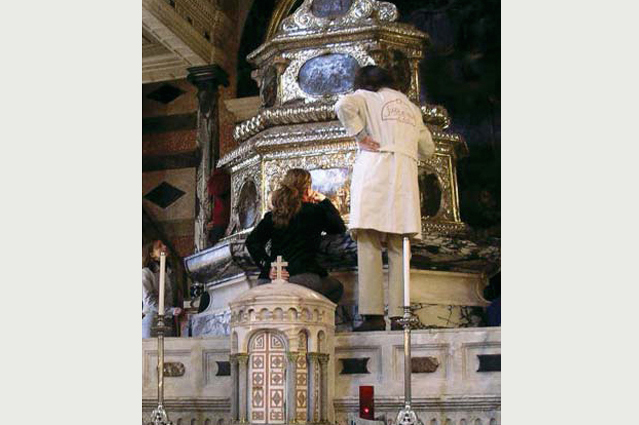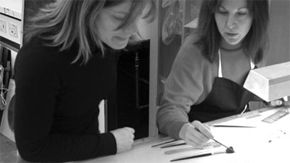
Highlights in this issue

Future challenges for RCA/V&A conservation
Alison Richmond , Senior Tutor RCA/V&A Conservation
The RCA/V& A Conservation Masters' programme is unique. It is a fully validated postgraduate course taught entirely within the museum context. However, our very uniqueness is our Achilles heel.

Traditional Japanese lacquer workshop: Summer 2003
Sarah Medlam, Deputy Keeper, Furniture, Textiles & Fashion Department Zoe Allen, Frames Conservator
The V& A Conservation Department has held a series of traditional Japanese lacquer workshops taught by lacquer artists visiting the UK for twelve months, under the Japanese Government Overseas Study Programme for Artists. The workshops aim to develop and deepen understanding of the traditional materials and technology used to create and decorate oriental lacquer.

The Internship and Placement Programme at the V&A Conservation Department
Val Blyth, Interns Co-ordinator Maria Walklin, Interns Administrator
The Department is committed to providing opportunities for mid-course and practising conservators to work within the Department to develop their skills and expertise. The internship programme at the V& A attracts a wide range of applicants from all over the world, with current interns coming from Croatia, Belgium, Germany and Austria. Since the beginning of 2001 26 internships have been hosted at the V& A.

LightCheck®: A new tool in preventive conservation
Hannelore Römich, Head of working group 'Research for Conservation' at Fraunhofer ISC Graham Martin, Head of Science, V&A Museum B. Lavedrine, Director of CRCDG M. Bacci, Head of Research, Istituto di Fisica Applicata "Nello Carrara" (IFAC)
Long or regular exposure to light, artificial or natural, may cause irreversible damage to valuable heritage objects. This damage may be visible, such as discolouration or fading, or result in a change of a mechanical property (e.g. brittleness of the historic material). It is known that the damage increases with the length of exposure and the intensity of lighting.
Summer 2004 Issue 47
- Editorial
- Conservation Department away day - December 2003
- Future challenges for RCA/V&A conservation
- RCA/V&A Conservation - do professional conservators make a contribution?
- Traditional Japanese lacquer workshop: Summer 2003
- The Internship and Placement Programme at the V&A Conservation Department
- LightCheck®: A new tool in preventive conservation
- RCA/V&A Conservation study trip, March 2004: Lisbon, Portugal
- Printer friendly version